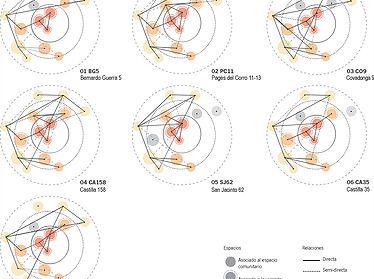SEVILLE / January 29, 2016
School of Architecture | Degree Hall
Title and abstract:
Community Spaces as Design Materials in Contemporary Housing. The Case Study of the Corrales of Triana
The evolution of lifestyles in relation to habitat is not an unexplored area of study. Different studies have already carried out this task of investigating how the probability of change in housing can alter habitat practises and, more specifically, the use of domestic space, but it is necessary to consider contemporary housing design from typological research in terms defined as: intermediate habitat, outdoor surface colonisation, and revitalising and using common areas. Like other approaches to contemporary housing, this research on the ways of appropriating the current intimate space and public space is carried out from the ways of living, the different critical thoughts, and the ways of projecting and inhabiting it that it acquires. Architecture, and specifically popular architecture, implies a marked social and cultural component, factors that contribute to the specificity of a certain number of its inhabitants. For this reason, it is possible to start from the experience and ways of life of the subject, already contrasted and verified, and use examples of domestic architecture, which build a social fabric based on these ways of life, as a place from which to review the project of contemporary housing. The previous reflection leads to the suggestion that the new room or habitat starts from the need for a rooted habitat that does not contradict the technique, which is currently considered necessary to satisfy new demands. In general, there has been a progressive shift in the centre of gravity from the home to the community, and housing will reflect these social trends. Vernacular architecture understands very well the concept of the natural use of spaces since, from a formal economy perspective, it must resolve different issues, not only private but also relational. The examples that this research studies, the neighbourhood corrals, are recognised with the previous conditions, and that allows linking, through them, the present and the future of the common spaces of collective housing. They are proposed as a way of establishing a temporary continuity that, from what already exists, beyond the social, the urban, and the symbolic, allows us to think about the future of these spaces for the city and for the community as places of representation and meeting, Using architecture as a vehicle. This research raises the possibility of a review of the current home using a specific architectural type as a model: the neighbourhood corrals of Triana. The basic and fundamental reason is to recover and integrate their most precious values: the sociability that they generate and the relationships that are established, factors that turn the corrals into identifying cultural spaces for the community that inhabits them. This leads to the conviction that today’s society needs to evolve from the individual, as an essential factor, to the person within the community, which conditions the activities carried out by the latter as recognition of the specific ways of each group and therefore makes it necessary to reconsider the spaces that host it. In the housing project proposed as the conclusion of this doctoral thesis, new living needs are combined with the enhancement of elements of vernacular collective housing, reactivated, and integrated into the contemporary housing project as resources available from new forms of use.


